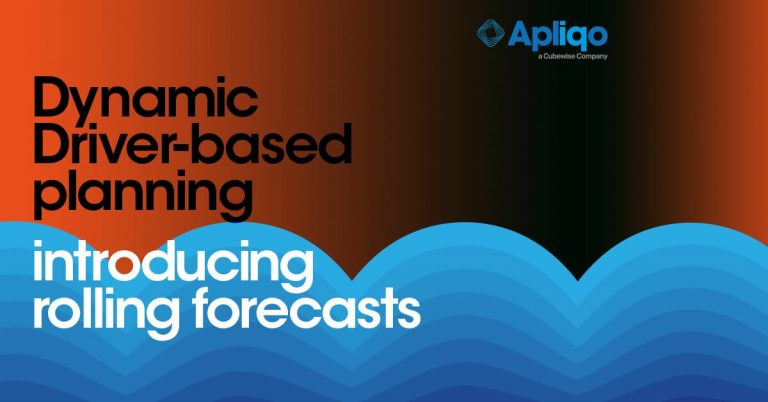by Daniele Tedesco
When I started my finance career over 15 years ago, the role of CFOs and finance professionals was purely accounting orientated.
Now, as FP&A takes on a key role in guiding strategic decision making, I like to think we’re entering a Golden Age where CFOs and their teams finally have the chance to step up and drive real value for their organisations.
Fulfilling these new roles, however, doesn’t come without challenges. As CFO, you need to ditch the accounting mindset, broaden both your personal skill set and that of your team, and implement new planning/reporting methodologies that better suit the needs of your company.
In our upcoming Masterclass, our host Jack Alexander will be taking an in-depth look at Rolling Forecasts, a key forecasting method that I consider a “must-have” for any finance professional looking to embrace their new role and drive real value for their business.
Save your seat for this exclusive Masterclass here, and keep reading for an introduction to this powerful, dynamic planning method.
Understanding rolling forecasts
Rolling forecasts are a powerful tool and methodology that allow companies to get regular, dynamic insights into their performance.
Traditional forecasting relies on past data to construct a static, single-point view of the future. And while they have served as the foundation of financial planning and analytics for years, these approaches now seem narrow-sighted, especially when held up against the fast-paced, tumultuous business climate we’re currently operating in.
That’s where rolling forecasts come in. Rather than holding a static view of the future, rolling forecasts undergo constant review to provide a more informed and realistic view of the future of a business. In doing so, they address many of the limitations of traditional forecasts and naturally help instil more agile approaches to your company’s plans.
To help highlight how rolling forecasts work and the potential they hold, it helps to imagine them in action; whereas your company’s traditional 12-month plan will continue to shrink as it approaches the “fiscal year cliff,” a rolling forecast will periodically be updated (generally every quarter) so as to never lose its 12-month (or even shorter or longer, depending on the industry) horizon.
In doing so, these extended forecasts allow you and your company’s key decision makers to stay agile, respond to changes quickly, and spot performance gaps more easily.
Moreover, I’ve personally found rolling forecasts to be especially useful in developing scenarios for Scenario Planning. As opposed to traditional, static forecasts, the dynamic nature of a rolling forecast naturally helps open CFOs and their teams up to imagining different future scenarios and analyse their impact on the company.
Tips for adopting rolling forecasts
While most FP&A professionals realise the potential of dynamic rolling forecasts, I’m continuously surprised by the number of finance departments or companies struggling to adopt them.
This likely comes down to the fact that many companies (regardless of their size or operations) and their finance processes are simply too rooted in tradition. In my previous posts, I’ve extensively talked about the “accounting mindset” and its crippling effect on the ability of FP&A departments to drive real value for their companies.
Today’s fast-paced, uncertain business climate, however, has rapidly created an environment for change. Any company serious about growth needs to realise the importance of FP&A in managing performance and driving strategy, and any CFO serious about driving value at his/her organisation needs to be incorporating rolling forecasts into their team’s planning processes.
To help streamline your company’s adoption of rolling forecasts, I recommend the following best practices:
- Set your sights on the key drivers of your business. In order to produce reliable rolling forecasts, you need to have a clear understanding of the key measures that drive value for your business.
- Adopt the right CPM solution. There’s no way you’re going to create meaningful rolling forecasts in Excel. You need to be able to draw numbers from a unified source and analyse changes to your company’s key drivers in a sandbox that doesn’t affect your source data and is capable of managing large data sets in a real-time environment that can be used by the whole organisation in a collaborative way.
- Start using scenario analysis. Creating what-if scenarios based on changes to your company’s key drivers is the only way to make reliable plans for the future. See our webinar on Scenario Modelling for more tips on how to adopt scenario analysis.
- Use variance analysis to measure the accuracy of your rolling forecast.
- Challenge traditionalism. Unfortunately, procedural change won’t be enough to truly transform how your company does finance. As CFO, it’s your job to help your team ditch its traditional “accounting mindset” and step up to its new role.
In my 15+ years of FP&A experience, I’ve never lived a more exciting time. With the right ideologies, methodologies, and technology, your FP&A department has the potential to grow into a key strategic partner that can help make or break your business.
For a more detailed look at rolling forecasts, join us on August 19th for our Masterclass on Fast Track implementing Rolling and Extended Forecasts with Jack Alexander.







